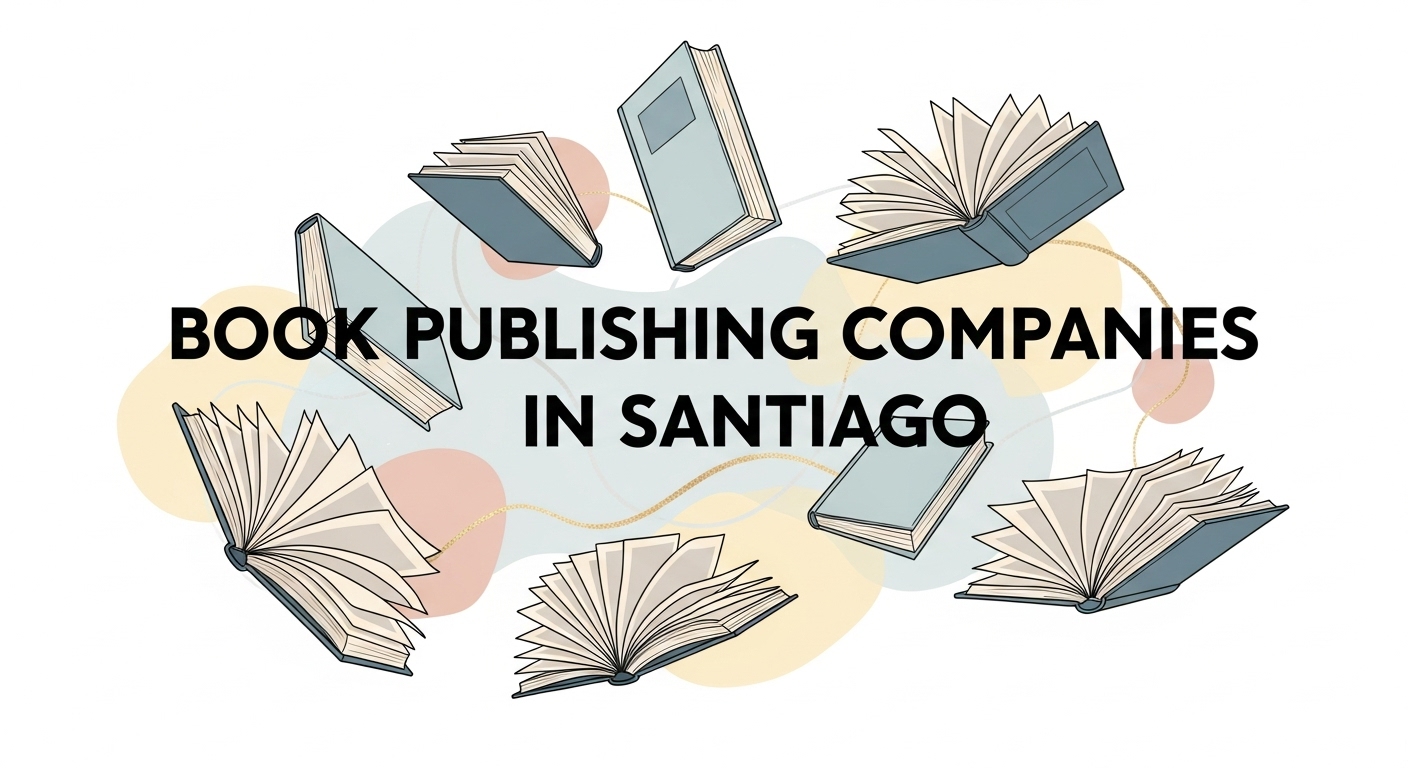
Santiago de Chile remains a central hub for Spanish-language publishing in Latin America: combining a strong literary tradition, a growing market for children’s and educational books, increasing interest in digital formats and audiobooks, and rising visibility of independent presses. By 2025 the landscape is more varied than ever: large international imprints, university presses, boutique and thematic publishers, as well as firms offering author services are all part of the ecosystem. For authors, translators, editors, or anyone interested in publishing in Santiago, knowing which houses are active, what niches they serve, and what standards and capacities exist is essential.
1. Barnett Ghostwriting
Barnett Ghostwriting operates as a full‐service author support provider. While not strictly a traditional trade publisher, it offers a range of services including ghostwriting, editing, design, proofreading, and often publishing or self-publishing assistance. Authors who have ideas or partial manuscripts and who need substantial support in turning them into publishable books may find Barnett helpful. Because its model depends more on services and fees rather than purely editorial selection, it tends to be a better match for non-fiction works—memoirs, business books, personal development—as well as authors who want to retain more control over content, schedule, and royalties. It may not have the same prestige as established literary presses, but its hands-on, practical approach makes it relevant in a market where many writers seek both guidance and autonomy.
2. Editorial Universitaria
Editorial Universitaria is one of Santiago’s venerable university-affiliated presses. It tends to focus on academic monographs, scholarly essays, and cultural works. Its editorial process is often rigorous, with peer review or equivalent, and its distribution channels include universities, libraries, and academic bookstores. For authors of academic or serious literary works, this kind of publisher is helpful not only for legitimacy (being associated with the academic world) but for reaching readers in scholarly circles. Because of its institutional structure, production schedules may be slower, and the economics more constrained compared to commercial publishers—but authors who value durability, careful editing, and contribution to intellectual discourse often prefer this kind of house.
3. LOM Ediciones
LOM Ediciones is an independent publisher based in Santiago which focuses on culturally engaged literature, essays, critical social or political work, poetry, and theatre. It has built a reputation for giving voice to debates in society, for publishing works that might be less commercially safe but socially or artistically significant. Writers interested in social criticism, literary experimentation, indigenous issues, or projects that intersect with activism often consider LOM. It may operate with smaller print runs than big commercial publishers, but in its domain the editorial attention and alignment with cultural purpose are strong.
4. Editorial Zig-Zag
Editorial Zig-Zag is a long-standing name in Chilean publishing, particularly strong in children’s books, educational materials, and classics accessible to young readers. It has institutional experience with school texts, curricula, and works that are illustration-heavy or pedagogically oriented. Authors or illustrators working in children’s literature or educational publishing will find in Zig-Zag a publisher with infrastructure: design, printing, and distribution suited to curricula, libraries, and schools. On the flip side, more experimental literary fiction or niche academic work may be less emphasized by this house.
5. Grupo Planeta Chile
Grupo Planeta Chile (sometimes called Planeta Chile) is part of an international publishing group. It tends toward commercial fiction, non-fiction (including business, popular science, self-help), bestsellers (local and translated), and works that can appeal to wider Spanish-language readers beyond Chile. For authors who aim at market reach, broader visibility, and possibly international rights (translations, distribution in Latin America and Spain), Planeta is a relevant option. The trade-off is that competition is stiff, editorial acceptance is selective, and publisher expectations regarding marketability can be higher.
6. Ediciones SM Chile
Ediciones SM (Chile) is a publisher with roots in educational and children’s literature. It offers books for young readers, illustrated works, and teaching materials. In Santiago, Ediciones SM is recognized for combining literary and pedagogical quality: not only stories and art for children and young adults, but products that can work in classroom and literacy settings. Authors of children’s fiction, illustration, youth literature, or educational content may do well with SM, especially if they can align to the publisher’s standards in illustration, editorial coherence, and teaching value.
7. Uqbar Editores
Uqbar Editores is an independent publishing house founded in 2006 and based in Santiago. Its catalog is versatile: it includes fiction, essays, historical studies, journalism, architecture, psychology, politics. Uqbar tends to balance market trends with intellectual and cultural interests. For authors whose work bridges scholarly or critical content and general readership, Uqbar is a plausible option. Because of its independence, print runs may be more modest; promotional budgets smaller; but its agility and willingness to take riskier ideas are part of its identity.
8. Editorial Catalonia
Editorial Catalonia is another independent publisher based in Santiago. Founded in the early 2000s, it publishes contemporary literature, essays, and cultural studies. It is known for modern design, attention to author voice, and for publishing works that are less mainstream—emerging authors, literary fiction, or works that engage in thematic innovation. Authors looking for close editorial collaboration and houses that are willing to publish literary or unconventional work often find Catalonia appealing.
9. Ediciones ARQ
Ediciones ARQ is the publishing division connected with the School of Architecture at the Catholic University (UC) in Santiago. It started with an academic journal (“ARQ”) and over time built up a catalog of books focused on architecture, urban design, landscape architecture, heritage conservation, history of architecture, theory, and related fields. As of 2025 it has published over 160 titles. For authors working in architecture or allied disciplines, this press offers domain expertise, editorial and peer review strength, and an audience among students, practitioners, and researchers. Its specialization also means that unless a manuscript relates to ARQ-aligned fields, it will likely be outside its scope.
10. Pehuén Editores
Pehuén Editores is an independent publisher with a long history (since the 1980s) that has particular strength in children’s literature, youth literature, and beautiful illustrated books. It also has a track record for publishing works that highlight indigenous cultures (such as Mapuche themes) and local folklore, which gives it a cultural role beyond purely commercial considerations. For authors whose works are visually rich or who want to explore or preserve local narratives, Pehuén offers an established platform. The trade-off may include more modest advance payments and smaller print runs, as well as tighter constraints on production costs (especially for illustration). (Mentioned among top Chilean publishers in recent surveys)
Market Trends & Advice for Authors in Santiago, 2025
To understand how to choose among these publishers (or whether self-publishing or hybrid models make sense), it helps to know what the market is doing in 2025. Below are a few trends plus practical advice.
Key Trends
- Local content is strong. Recent market studies show that books with Chilean ISBNs (i.e. local production) make up a large portion of revenue. There is demand for culturally relevant works: about history, politics, identity, indigenous cultures. Works that speak to current social issues tend to attract both critical attention and reader interest.
- Children’s and educational publishing remain stable and growing. Schools, literacy programs, and parents continue to drive demand. Illustrated books, especially those that combine visual appeal with pedagogical content, are being looked at favorably. Publishers like Zig-Zag, SM, Pehuén, etc., continue to invest here.
- Digital and audio formats are expanding. While print remains dominant, ebooks and audiobooks are growing, especially in certain segments (non-fiction, young adult, children). Authors/publishers who plan for multi-format (print + digital + audio) have a competitive edge.
- Independent and boutique publishers have influence. Even with lower budgets, independent presses (LOM, Catalonia, RIL, etc.) play a disproportionate role in critical recognition and in launching emerging authors. Festivals, literary awards, small cultural grants and subsidies support them.
- Institutional publishers (university presses, academic journals) are consolidating scholarly standards. These presses may have lower financial returns but deliver lasting impact, prestige, and often better archival and distribution networks in academic circles.
Practical Advice for Authors
| Advice | Why It Matters |
| Research the publisher’s recent catalog | To see if your manuscript fits them; publishers tend to specialize. Eg, Ediciones ARQ for architecture/design; Pehuén for children’s illustrated books. |
| Know what rights you are willing to give up | Translation, foreign rights, audio rights—some publishers demand exclusive rights; others more flexible. |
| Prepare professional manuscript + sample illustrations (if relevant) | Quality of editing, proofreading, layout often matters a lot in Santiago’s more established presses. |
| Be realistic about timelines and advance payments | Independent and university presses often have longer schedules and smaller or no advances; commercial houses may offer more but expect higher sales. |
| Consider hybrid or service models | If your book is very niche or you want more control, models like Barnett Ghostwriting or self- or co-publishing may be alternatives. |
| Think about formats beyond print | E-books, audiobooks, or special illustrated editions may open additional readership, though also cost more in preparation. |
Conclusion
By 2025, Santiago’s publishing environment offers many routes for authors: from large commercial publishers and university presses to independent, boutique houses, and service-based models. Choosing a publisher involves matching your work to their domain, understanding the economic and rights trade-offs, and planning ahead (for promotion, format, translation). Authors who do this research tend to have better outcomes—better alignment with publisher goals, smoother editorial process, and more satisfying publishing experiences.





